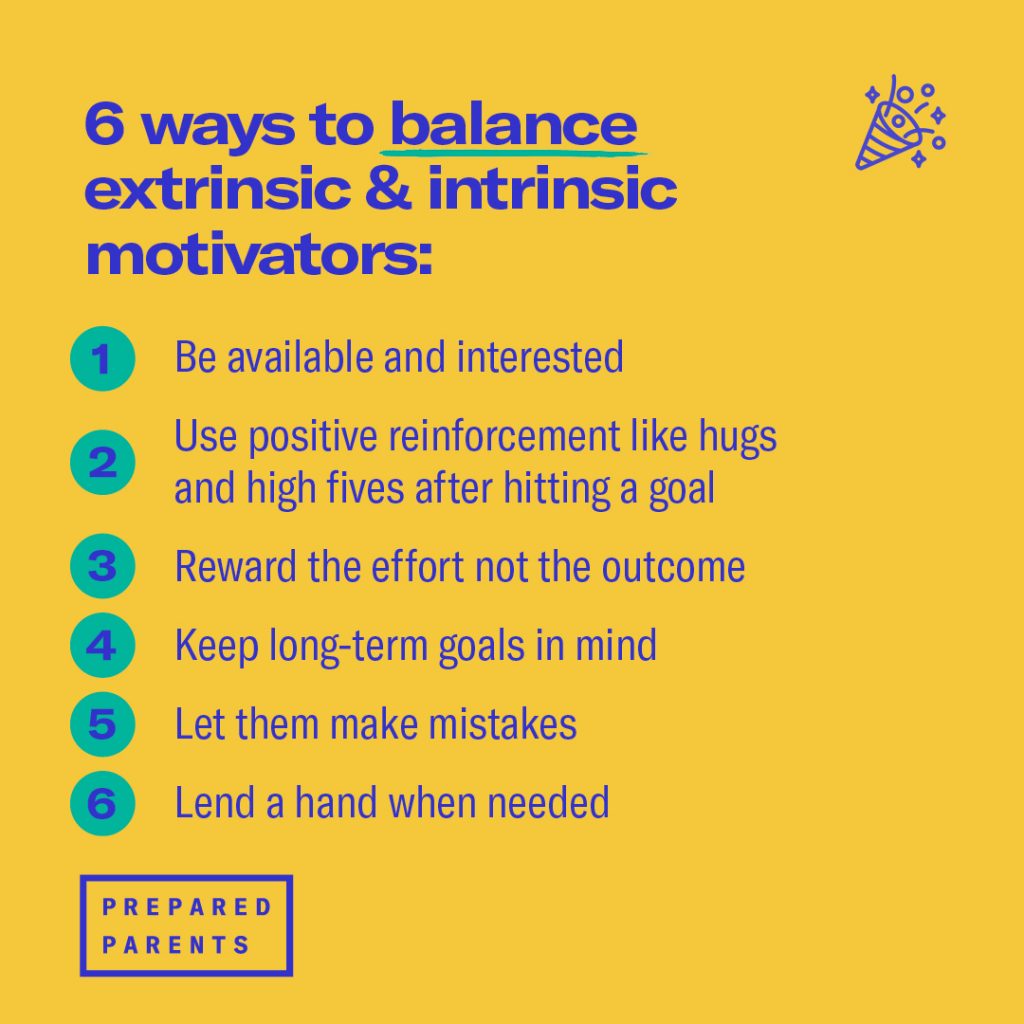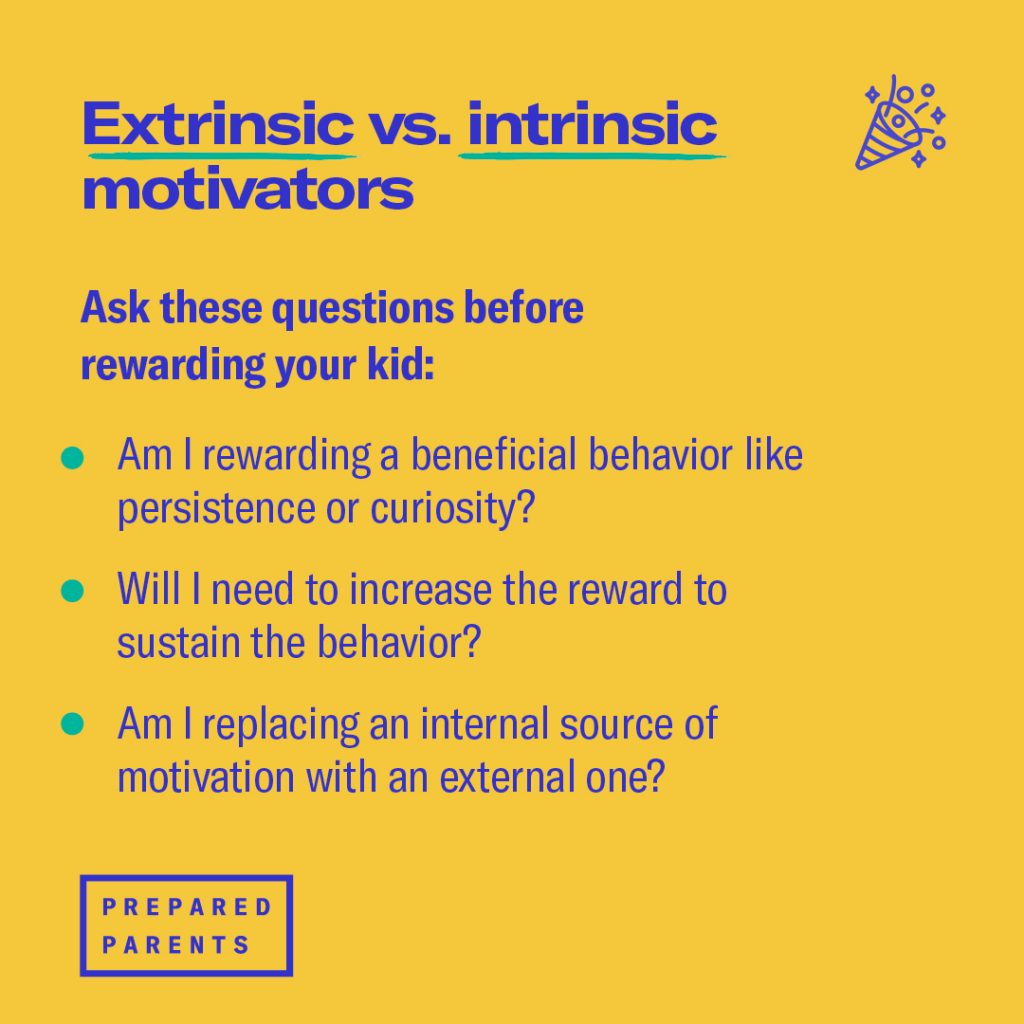Are you bribing your kids with chocolate, stickers, and endless hours of screen time to do schoolwork, household chores, or just to get out of your hair for a few minutes? Understanding and using praise and rewards wisely can help ensure that our efforts to motivate our kids don’t backfire in the long run.
There isn’t necessarily a right or wrong to how we motivate our kids. Ultimately, our goal is to help our kids find their intrinsic motivation; kids who are intrinsically motivated engage in a behavior because it’s personally rewarding. They like doing it. Intrinsic motivation encourages self-determination, the ability for kids to make choices and manage their own life.

Rewards are what psychologists call extrinsic motivators, praise or tangible goods that elicit an action. Some parents think that extrinsic motivation is bad, but it can be very helpful. Well-constructed extrinsic motivators can enhance a kid’s productivity, and can boost a kid’s feeling of competence after doing good work. Gold stars and high fives are important in supporting productive struggle and validating a kid’s emerging identity. In such cases, praise may even increase their enjoyment of an unpleasant task.
However, rewards can also dampen intrinsic motivation when used incorrectly. And, research shows that when behavior is no longer rewarded, there’s a good chance that it cannot be sustained or that kids will respond to a parent’s request by saying, “what will you give me to do that.”
Step 1- In the moment, consider the below questions before using a reward.

Step 2- Understand the dos and don’ts of extrinsic motivation.
To ensure your rewards and praise don’t backfire, take a moment to download the dos and don’ts of extrinsic motivation, and incorporate these ideas into your parenting toolkit.
- Suggestions for what rewards to use and when;
- the Reason why; and
- An example.

